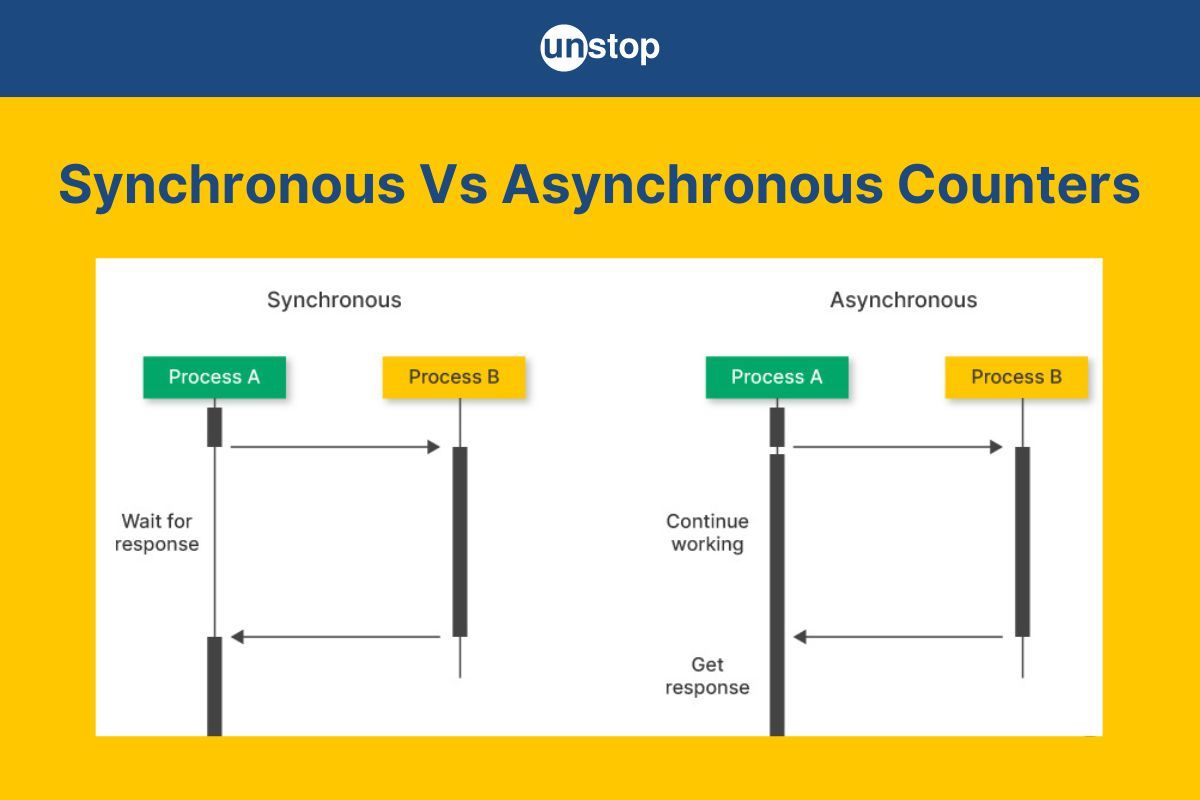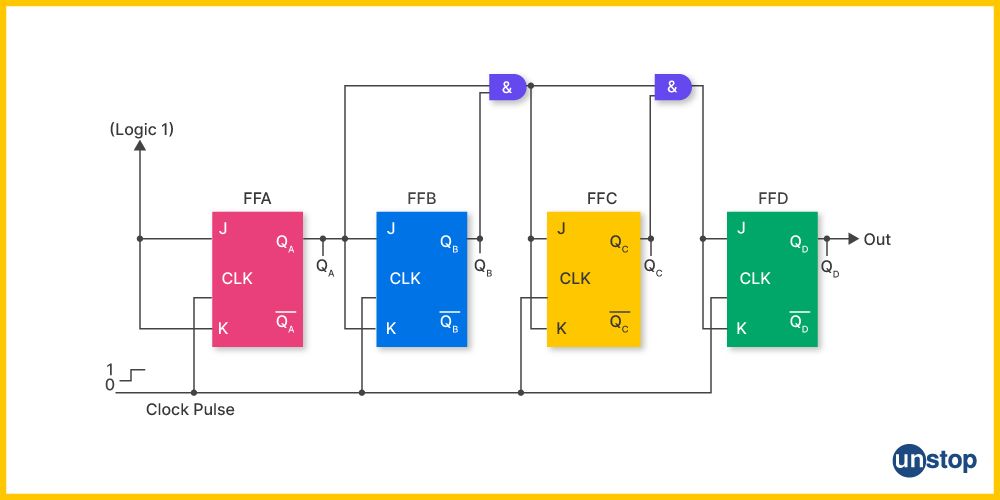Let's take a detailed look at the major differences between synchronous and asynchronous counters:
| Aspect | Synchronous Counter | Asynchronous Counter |
|---|---|---|
| Clock Signal | All flip-flops receive the same, common clock signal. | Each flip-flop is triggered by the output of the previous flip-flop. |
| Timing | All flip-flops update their states simultaneously. | Flip-flops update one after another, causing ripple effects. |
| Speed | Faster operation due to simultaneous switching. | Slower operation due to accumulated propagation delay. |
| Complexity | More complex to design because of clock distribution and logic control. | Simpler in design with minimal clock wiring. |
| Power Consumption | May consume more power due to simultaneous state changes. | Usually consumes less power as only one flip-flop switches at a time initially. |
| Propagation Delay | Very low; all outputs update together. | High; delay increases with each added flip-flop. |
| Noise Immunity | Higher immunity due to synchronous behavior. | Lower; glitches and timing issues are more likely. |
| Design Flexibility | Less flexible; modifications are harder and often require redesigning clock control logic. | More flexible; easy to add more stages (flip-flops). |
| Synchronization | Naturally synchronized; less prone to timing errors. | Prone to synchronization issues, especially in large circuits. |
| Glitch Susceptibility | Less prone to glitches. | More prone to glitches due to ripple effect. |
| Hardware Requirement | Often requires additional combinational logic (like decoders) for specific outputs. | Requires fewer external components. |
| Testing and Debugging | Slightly harder due to complexity and simultaneous switching. | Easier to debug since flip-flop changes are sequential. |
| Use Cases | Ideal for high-speed applications like microprocessors, timers, and digital clocks. | Suitable for low-speed applications like simple event counters, toy electronics, and LED chasers. |
We will now understand each of these counters in detail in the sections ahead.




















Comments
Add comment